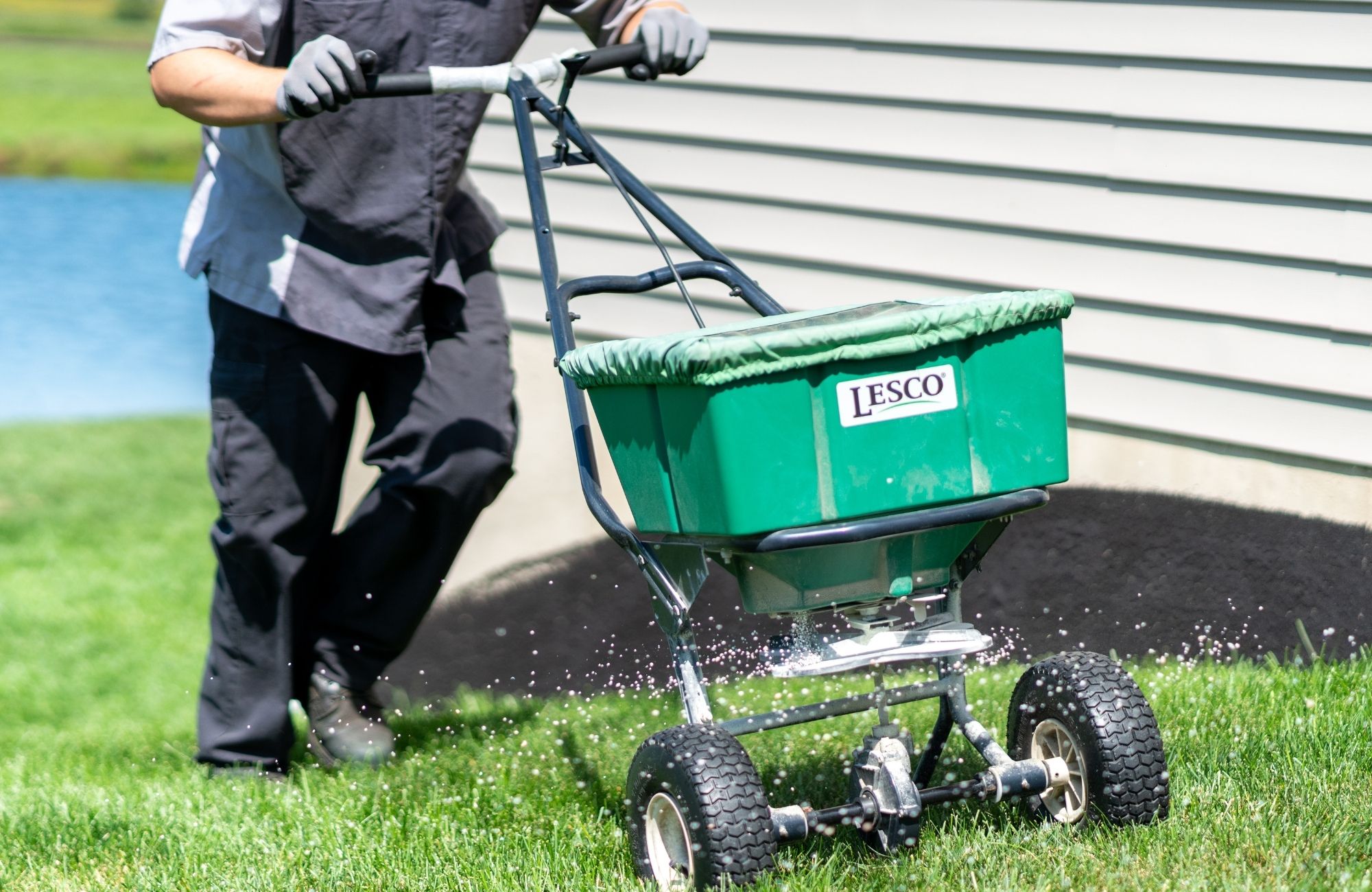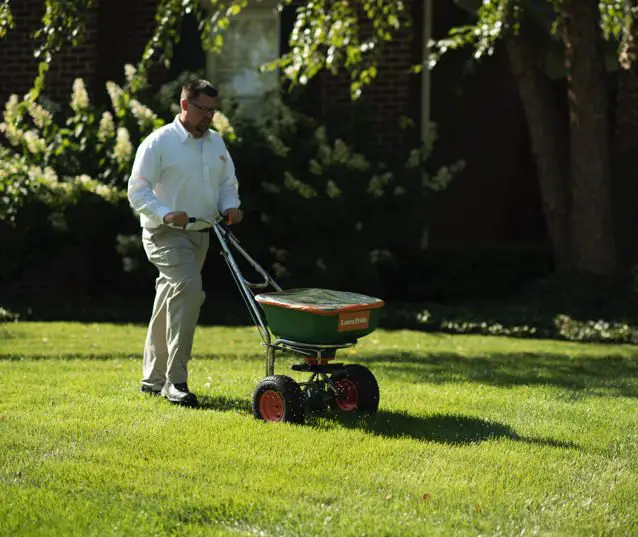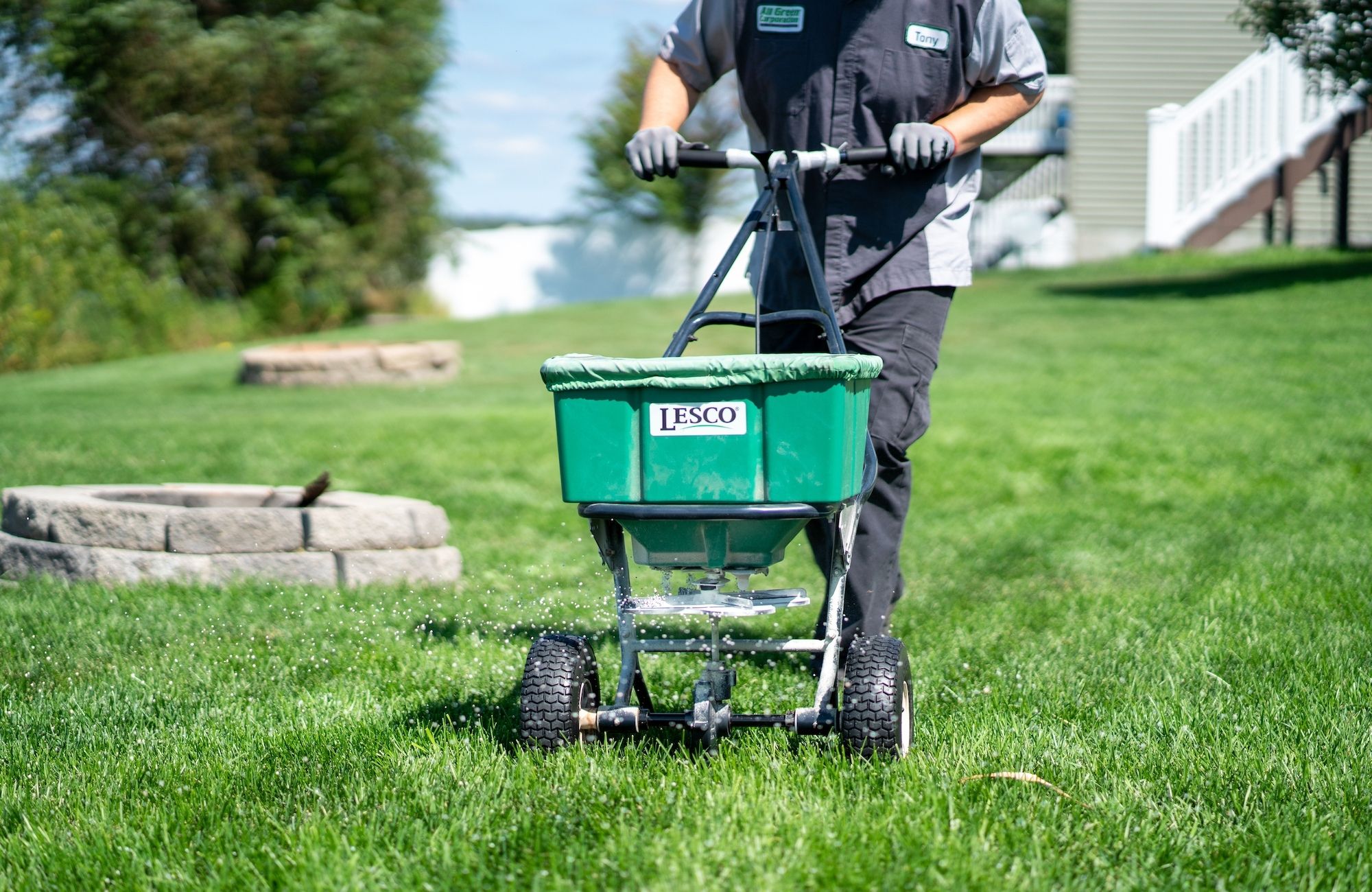Feeding The Lawn In The Summer And Fall
Warm-season grasses;thrive in the heat of the summer and can be fertilized throughout the growing season. However,;cool-season;grasses are in a survival mode during the heat of the summer. Refrain from applying fertilizer to a lawn in mid- or late-summer if you live in a climate where cool-season grasses are in your lawn seed mix. A cool-season lawn should need nothing other than water and pest management until September.
Most lawn experts recommend a mild dose of a “turf-builder” fertilizer formulation in the early- to mid-fall, while the turf still has several weeks of active growth before dormancy. This application will help build robust root systems going into winter and restart the growing cycle in the spring. You are not looking to return your lawn to the green of summer. Heading into winter, you can expect a natural slowdown of your lawn’s growth and the loss of its green luster.
Indiana Lawns In Spring: Top 3 Things You Need To Know
All you have to do is step outside for a few minutes to know that its February in Indiana. The temperatures combined with snow and often ice are enough to make you want to go right back indoors; youre not even beginning to think about your lawn. Its dead these days anyway, right? Well. . . not exactly. Even though your grass may not even be visible, let our team at All Brothers Lawn Squad, LLC share a few things about your yard that will soon awaken with the arrival of spring.
When Is The Best Time To Overseed
Hands down, early fall is the best time to overseed your lawn. The absolute sweet spot for most northern regions of the U.S. is August 15 to September 15. Thats when daytime temperatures are still warm enough to encourage growth and nights get cooler, giving new seedlings a break from the heat. Lawn grasses like that. Soil temperatures are ideal, too, resulting in quicker seed germination.
But dont let missing that perfect seeding window stop you. Depending on where you live, overseeding can be done all the way through September and into early October. Weed competition is virtually nonexistent and predictable rains fall softly with few gully washers that could wipe out your efforts in 15 minutes. All these factors create the perfect late summer/early fall window for overseeding your lawn.
Don’t Miss: I Put Too Much Oil In My Lawn Mower
Lawn Care & Fertilization Sheridan In
Looking for lawn care and fertilization in the Sheridan, IN area? At BAM Outdoor, we can help you with lawn care or landscape project you may have. There is a lot more that goes into having the type of yard you can be proud of, than simply cutting the grass each week. We have been serving the people of Sheridan, IN and the surrounding areas since 1999, and know how to help you get a lawn you can be proud of.
Our trained specialists know how to create a green, nearly weed-free lawn, and do it quickly. A great lawn deserves regular, consistent treatment to produce the best possible results. We recommend 2-3 applications for the season.
Customized Care for All Seasons
The first visit is designed to promote recovery from winter stress and early spring greening. We also apply weed control and crabgrass control, weather permitting.
In the spring, your lawn needs extra nutrients to maintain color and density. While delivering nutrient treatment, we also inspect and treat weeds in your lawn. Crabgrass control may be reapplied if necessary.
Summer conditions can stress your lawn. To prepare for the warm season ahead, we fertilize, look for problems, and treat surface-feeding insects and weeds as necessary.
Care continues with a summer fertilizer application that helps maintain color without encouraging excess growth. Weeds will be treated if necessary, and if grubs are present, we recommend a control option for you.
The Best Planting Season

In Indiana, the ideal time to plant your new lawn is late summer or early fall , or at least two months before the first frost of the season.
The soil at this time of year is still warm from months of summer sun. Warmer soil temperatures and consistent rainfall will encourage faster seed germination and deeper roots and help the grass plants get established before winter sets in.
Weed growth also tapers off in the fall, which means your new grass wont have to compete for nutrients, water and sunshine.
The second-best time to seed a lawn in Indiana is in the spring, after air and soil temperatures have warmed up following winter. This season is more challenging for planting grass seed, however, because late-melting snow and early rainstorms often keep the soil too cold and wet, an inhospitable environment for germination and growth. Fortunately, Jonathan Greens Black Beauty turfgrass mixtures are bred to perform even under these conditions, so youll usually have success, even with a spring seeding.
By following Jonathan Greens revolutionary New American Lawn Plan, you will learn how to get to the root of any lawn problems, instead of merely battling the symptoms, such as weeds and insects. Our goal is to feed your lawn AND your soil and encourage your Black Beauty lawn to thrive.
For more information on how and/or when to plant grass seed in Indiana, visit Jonathan Green online or locate your nearest retail store where you can get reliable lawn and garden advice.
Read Also: How To Kill Wild Violet Weeds In Lawn
Be Wary Of Fertilizer Application Rates
Across the board, most fertilizer manufacturers are overzealous about their recommended dose and feeding schedule. Start light with half the recommended amount and rate of fertilizer. You can reapply if you don’t like the results. Over a season or two, you’ll get a clear sense of how much it takes to get a healthy lawn.
A healthy lawn will be a relatively light shade of bright green. A lawn that is a deep, almost blackish green, has been very heavily fertilized. The dark green color comes from a lot of nitrogen-based fertilizer used on the lawn. It is highly likely that some of that fertilizer has run off into the streets, storm sewers, and has made its way into local streams and rivers.
Determining The Best Times To Fertilize
Homeowners who prefer organic fertilizing methods might do a single “turf-builder” application in the early fall to build root systems. In the spring and summer, most may omit all fertilizers and rely on the nitrogen from mulched grass clippings to feed their lawn.
Homeowners using traditional fertilizer might want to apply two or three light applications per growing yearone in the spring, one at midsummer in regions where it is necessary, and one “turf-builder” application in the early fall.
The actual timing depends on your region and the type of turf grasses you have. For information on the best recommendations for your area, contact an expert at a local garden center;or reach out to the nearest cooperative extension office.
Once you have figured out the best time, try to plan the fertilizer application with a short period of rainfall. If not, when you apply the fertilizer, you will need to supply your lawn with at least a quarter-inch of water. However, do not apply fertilizer before a massive storm. A rainstorm increases the risk of fertilizer nutrients flowing into storm drains and streams.
Also Check: How To Kill Wild Violet Weeds In Lawn
Late Summer To Late Fall
Between August and November, grass slows down and prepares for the winter months. At the same time, broadleaf weeds start active growth again. With Pennington UltraGreen Winterizer Plus Weed & Feed Fertilizer 22-0-14,;you can feed your northern or southern lawn nutrients essential to its winter prep and spring green-up and kill broadleaf weeds. As a general rule, allow six to eight weeks between fertilizing and your first expected frost.
As with all fertilizer products, check the label and follow instructions for your specific grass type. If you’re overseeding, wait until next year for weed & feed. Instead, turn to Pennington UltraGreen Lawn Fertilizer 30-0-4 for the year’s final feeding.
Always sweep excess fertilizer off sidewalks and patios to avoid runoff.
When Should You Start Fertilizing This Spring
Allyn HaneNews
Hey Yall, hope your week is off to a successful start and lawn care is a part of it!Last weekend I posted an important video talking all about spring fertilizer and how much to throw down and when.If you have not seen that video, I highly recommend you view it starting here:
Another important part of that video is that I took some fertilizer and showed you how to apply it with confidence.That is important because too many times this year Ive had people contact me saying I put the entire bag of fert in my hopper and it was all gone when I was only half done applying!So this video shows you how to apply starting in a small area to make sure your spreader matches the suggested spreader settings on the bag.Key word there is that the spreader settings are suggestions!
Things to consider:
1.2.3.;4.;5.;
As always, I hope this email has been helpful, and Ill see you in the lawn!-AL
ABOUT US
Welcome to the official site of Allyn Hane, The Lawn Care Nut from YouTube. Here you will find my free newsletter that gives you much more than just the tip. I also carry the full line of N-Ext soil optimization products including RGS, Air8 and De-Thatch along with MicroGreen and Green Effect plus much more!
NEWSLETTER SIGNUP
Also Check: Best Way To Kill Clover Without Killing Grass
Shrub And Tree Fertilization Services Also Available
Are your landscaping shrubs and trees showing signs of disease or unhealthy growth? We can also add a liquid fertilizer application to your foliage to give your plants better resistance against disease and pests. This can be offered at the same time as the disease and insect control treatment that is part of our lawn care program.
When To Fertilize Lawn
Knowing when to fertilize your lawn depends on how often you plan to apply it. If you fertilize once a year, do it around Labor Day; thats when lawns absorb the most nutrients. For biannual fertilizing, add a second application the middle of October.
There are exceptions to this timeline depending on climate and soil types, so adjust if your lawn is not retaining enough nutrients. In the spring, if you feel the need, spread a little fertilizer to help the greening process.
You May Like: Love My Lawn
How Do I Know If The Fertilizer Is Phosphorus Or Nitrogen Free
Three numbers are displayed prominently on the bag of fertilizer. Look for a zero as the middle number of the three numbers. These numbers represent the percentage by weight of nitrogen , phosphorus , and potassium , respectively. Phosphorus-free fertilizer has a zero in the middle and nitrogen-free fertilizer has a zero as the first number.
With the exception of lawn starter fertilizers, almost all lawn fertilizers found in home improvement stores are now phosphorus-free.
Fertilizing Schedule For Home Lawns

This lawn is damaged as a result of excessive spring fertilizer applications.
Two important factors to consider when fertilizing lawns are how much and when to apply. About three pounds of nitrogen per 1,000 square feet per growing season is suggested for most full-sun lawns in northern Illinois . Split into two or three applications, with each single application of nitrogen being about one pound per 1,000 sq. ft. About half as much nitrogen is suggested for shade lawns. Percent nitrogen in the bag and size of the lawn are calculation variables as shown below.
Recommended Reading: How To Estimate Lawn Mowing Jobs
Debating The Use Of Fertilizer On The Lawn
Whether or not you should use fertilizer on a lawn depends on where you stand on organic or low impact-to-chemical gardening practices. Organic gardeners bemoan the use of any chemicals as lawn fertilizers. The main concern is the fertilizer run-off can enter the local water supply. There is good evidence that shows phosphorus and nitrogen from lawn and agricultural fertilizers are contaminating streams, rivers, and groundwater supplies, creating a pressing environmental problem.
There are a few organic methods of feeding a lawn safely. You can choose to use a mulching mower that chops up grass into fine particles that then break down on the lawn. Horticultural experts say that throughout the season, this technique provides a lawn with as much nitrogen as one complete application of lawn fertilizer. You can also use organic fertilizers made from natural materials instead of refined chemicals. Organic-labeled fertilizers will indeed feed your lawn, though they are usually less saturated with the essential nutrients than the industrially refined fertilizers.
Pre-emergent herbicides are a combination of fertilizer and crabgrass control herbicide applied in the early spring. This combination product does not have a full feeding of fertilizer. This small dose of fertilizer slightly boosts grass growth and keeps it alive, while the herbicide in the product restricts crabgrass seedling development.
Simple Fall Lawn Care Tips For Indianapolis In Lawns
When fall is around the corner, its time to prepare your lawn for the upcoming winter weather in Indianapolis, IN. So, when it comes to lawn care, there are some things you can do to take care of your lawn and prepare it for the winter months. Here are four simple fall lawn care tips for Indianapolis lawns.
Recommended Reading: Gnat Yard Treatment
The Basics Of Winter Lawn Care In Indianapolis In
Before winter hits in Indianapolis, IN, youll want to make sure youve winterized your lawn. Theres more to winterizing your lawn then just putting away the lawn mower and picking up toys. For a yard that will be beautiful and lush in the spring, there are some chores to winterize it to survive even the harshest winter.
Covering the basics of winterizing your lawn includes mowing, fertilizing, cleaning up debris, and aerating. Here is how to do so accordingly to your lawn in Indianapolis, to ensure a healthy spring growth following winter.
What Our Customers Say
Daniel is always courteous and always friendly. Yesterday we spoke at length about the new grass added to replace the frozen tundra left from the BIG FREEZE! He offered some helpful hints and cautioned me to watch for bugs. We spoke about dove weed and what currently can and cannot be done. I highly recommend Daniel as a service consultant.Honestly, all the folks whom have been to my yard over the years have
I would like to take a moment and give you my opinion of your crew. I think you have the greatest guys working for you. They are very well mannered and very informative. They always say thank you and ma’am. Being an old southern gal, that means a lot to me. Also, they are very informative. They take the time to explain the process and limitations for treating my centipede. After they
I began using NaturaLawn of America back in the early spring , shortly after buying a new home. The house was a ‘flip’ and the yard had been ignored and was my biggest challenge. Needless to say; I needed the help of an expert. Before any work was done or money exchanged, I had walked my property, pointed out my concerns, and generally had a good Q&A with NLA. Since then , I
Don’t Miss: Best Weed Control For Creeping Charlie
When And How To Fertilize Your Lawn
In some ways, lawns are a lot like people. Operating at the peak of beauty and performance requires a good diet and proper care. Lush, thick, green lawns depend on properly timed, properly balanced nutrition to look and grow their best. Understanding when and how to fertilize your lawn can help you and your grass stand out from the rest.
Caring For Newly Seeded Areas
- MOWING: With mulching mower set at highest setting, you can begin mowing after 6 weeks.;As lawn thickens, gradually lower mower setting with each mowing to a height no lower than;3. For non-irrigated lawns, keep at the highest setting during summer to preserve moisture.;A high cut results in deeper, more drought-resistant roots, slower regrowth, hardier turf, cooler;soil with higher water retention, and greater resistance to weeds, insects, and disease.
- FERTILIZE: Lawns that are re/overseeded in spring should be fertilized in September and;November with all-purpose Elements fertilizer. When lawns are re/overseeded in fall, no fertilizer is needed until;the following spring.
- NO WEED CONTROL: Never apply pre-emergent crabgrass control at the time of seeding.;New seedlings can be harmed by weed control, so we recommend waiting until the;following season when the new grass will be a bit more mature.
Also Check: Troy Bilt Air Filter Lowes
When To Plant Grass Seed In Indiana
If you have wondered when the time is right to plant grass seed in Indiana, youve come to the right place! At Jonathan Green, well provide tips and strategies that will help you achieve a thick, healthy and carefree lawn.
Since 1881, the Jonathan Green name has stood for genetically superior cool season grass seed, innovation, integrity, determination and a commitment to excellence. Today, six generations later, we remain committed to producing superior lawn and garden products.
We supply grass seed, soil enhancers, fertilizer, and organic lawn and garden products to professional customers, such as sod growers and independent retailers, throughout the Northeast, Mid-Atlantic and Midwestern United States.
How Often To Fertilize Lawn

Over-fertilizing is a thing. If once a year is right for your lawn, stick with that and dont get carried away. Fertilizer can be a valuable tool to keep a lawn healthy, dense and looking great, but it can also create environmental concerns if not used responsibly. Follow the label instructions on your fertilizer as each product has unique specifications and needs.
Recommended Reading: Get Rid Of Creeping Charlie Naturally
